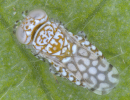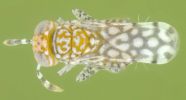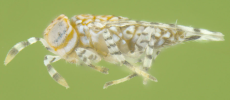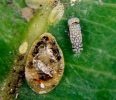Scientific name
Marietta leopardina Motschulsky
Taxonomic position
Hymenoptera: Chalcidoidea: Aphelinidae
Diagnosis
Images





 Adult of M. leopardina - dorsal and lateral views Adult of M. leopardina - dorsal and lateral views
 Freshly emerged adult of M. leopardina Freshly emerged adult of M. leopardina
Biology and hosts
Species of the genus Marietta are almost always hyperparasitoids of Hemiptera, including Diaspididae, Coccidae and other families. The species are very commonly collected and often
erroneously recorded as primary parasitoids. Only Marietta pulchella Howard has been recorded as a primary parasitoid of the scale, Conchaspis angracei Cockerell (Beardsley & Tsuda, 1990). The world fauna of the genus Marietta includes 19 species (Hayat, 1998). Hayat (1986) provided a key to the species, along with host and distribution records.
References
- Hayat, M. 1986. Notes on some species of Marietta (Hymenoptera:
Aphelinidae), with a key to world species. Colemania, 2: 1-18.
- Hayat, M. 1998. Aphelinidae of India (Hymenoptera: Chalcidoidea): A taxonomic revision. Memoirs of Entomology, International. Vol. 13. Associated Publishers. Gainesville. 416 p.
|